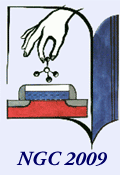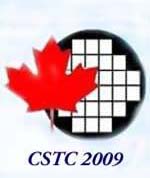
|
Nano and Giga Challenges in Electronics, Photonics and Renewable Energy | 14th Canadian Semiconductor Technology Conference |

 |
|
 |
|
|
Commentary
In August 2009, McMaster University is hosting two nanotechnology conferences blended in a mixer of international and Canadian communities – Nano and Giga Challenges in Electronics, Photonics and Renewable Energy (NGC2009 – 4th Nano & Giga Forum) and the 14th Canadian Semiconductor Technology Conference (CSTC2009). Bringing together the communities and networks of two well-established conference series is expected to provide a vibrant brainstorming atmosphere and attract leading experts and young talents to address challenges facing nanotechnology application in the hottest scientific and technological areas – electronics, photonics and renewable energy. McMaster has traditionally been Canada´s leading university for materials—based research. In recent years much of this activity has focused on nanostructured materials and related technology. There are several research centers and institutes involved in this effort: Brockhouse Institute for Materials Research, Canadian Centre for Electron Microscopy, Centre of Emerging Device Technologies and the Centre for Micro—Nano—systems Research. We have recently established a new coordinating body, McMaster Initiative in Nano Innovation (MINI). This group will coordinate new research and assist in translating the activities into economic growth. The problems of information and energy processing and storage at the nano scale overlap at the level of fundamental laws of quantum mechanics, statistical physics, creating challenging and inspiring novel technological solutions and moving across traditional borders of the sciences and industries. While the electronic industry has enjoyed continuous exponential growth in the last forty years by scaling devices to smaller and smaller sizes, it is finally reaching the fundamental limits with gate–oxides of transistors being only a few atomic layers thick and lithographic patterning pushing below the wave length of the photons. At the same time,the semiconductor industry gets a new driving force from climbing oil and gas prices and growing environmental concerns and limits in use of natural mineral fuel. Both information and solar energy technologies (photovoltaics) have the same material basis — semiconductors, with silicon playing the major role due to its low price, abundant presence in nature and remarkable properties. The natural synergy of the scientific and technological problems of electronics, photonics and renewable energy has inspired the organizers of the NGC/CSTC 2009 meeting to bring together researchers from these areas to stimulate cross-disciplinary exchange of ideas and potential solutions. Moreover, technology and business leaders are invited and encouraged to take advantage of the presence of renown technical experts to accelerate the idea transfer from labs to fabs and to use the meeting as a one stop, fast, and efficient due diligence of new innovations. Tutorial lectures, plenary review and smaller group sessions, exhibitions, satellite workshops and a diversified social program will provide multiple opportunities for information exchange and networking at the comfortable and pleasant campus of McMaster University. |